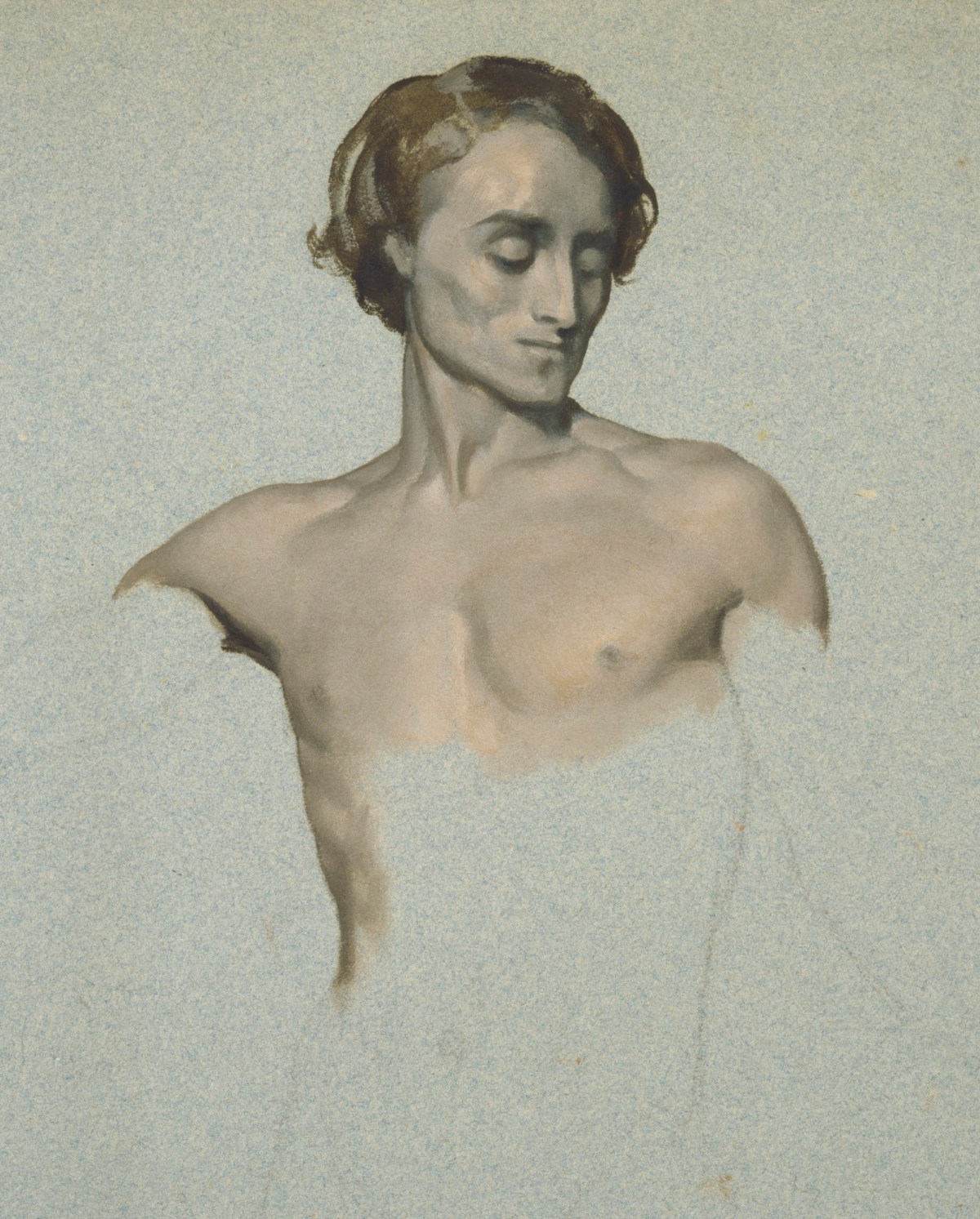
Lord Leighton PRA, Head and shoulders of a man, possibly relating to 'Cimabue's Celebrated Madonna'.
Watercolour and gouache over black chalk on blue wove paper. 250 mm x 193 mm. © Photo: Royal Academy of Arts, London. Photographer: Prudence Cuming Associates Limited.
This image is not available to download. To licence this image for commercial purposes, contact our Picture Library at picturelibrary@royalacademy.org.uk
Head and shoulders of a man, possibly relating to 'Cimabue's Celebrated Madonna'
Lord Leighton PRA (1830 - 1896)
RA Collection: Art
Planning his exhibition début in 1853, Frederic Leighton intended to paint two canvases - 'Cimabue's Celebrated Madonna' and 'The Reconciliation of the Montagues and the Capulets over the Dead Bodies of Romeo and Juliet' - one to be submitted to the Paris Salon and the other to the Royal Academy. Originally, the latter was to be the larger canvas and was destined for Paris where Leighton believed a large work would be more readily accepted. However, he eventually painted the Cimabue composition on a grander scale than 'The Reconciliation' and was persuaded to send it to the Royal Academy in 1855. It was exhibited and purchased by Queen Victoria for Prince Albert, for the sum of £600.
Leighton was habitually fastidious in his preparatory work but in the case of his first exhibition painting he was particularly meticulous. Many of these detailed studies of heads, figures and drapery are dated 1853 and were made in the winter and early spring of that year while Leighton was living in Rome. Hoping for some guidance, Leighton sent one of his studies to his Frankfurt mentor, the Nazarene painter Edward von Steinle, but the latter's response was a slightly negative warning against 'excessive fineness'. In a reply to Steinle's criticisms, Leighton explained his practice of making copious 'fine' studies by stating his belief that a young artist must master 'the foundation' of art before trying to emulate the 'broad', confident manner of the Old Masters; 'genuine mastership is not an acquired quality but an organised result...If we cast an eye over the progress of art-history, we see how the full, conscious, free, has developed itself out of the meagre, timourous, scrupulous, dry...You will easily understand how by the application of these maxims my preliminary works go forward rather timourously...I am laying the foundation on which I hope to rely firmly later on'. (see Mrs. Russell Barrington, The Life, Letters and Work of Frederic Baron Leighton of Stretton, London, 1906, Vol I, p. 155-56)
Object details
250 mm x 193 mm
Start exploring the RA Collection
- Explore art works, paint-smeared palettes, scribbled letters and more...
- Artists and architects have run the RA for 250 years.
Our Collection is a record of them.



